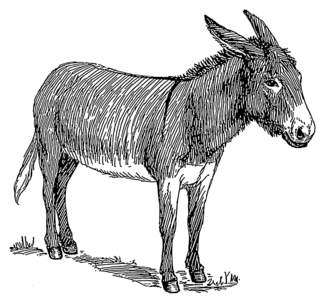At common law, damages are a remedy in the form of a monetary award to be paid to a claimant as compensation for loss or injury. To warrant the award, the claimant must show that a breach of duty has caused foreseeable loss. To be recognised at law, the loss must involve damage to property, or mental or physical injury; pure economic loss is rarely recognised for the award of damages.
Negligence is a failure to exercise appropriate and/or ethical ruled care expected to be exercised amongst specified circumstances. The area of tort law known as negligence involves harm caused by failing to act as a form of carelessness possibly with extenuating circumstances. The core concept of negligence is that people should exercise reasonable care in their actions, by taking account of the potential harm that they might foreseeably cause to other people or property.
Product liability is the area of law in which manufacturers, distributors, suppliers, retailers, and others who make products available to the public are held responsible for the injuries those products cause. Although the word "product" has broad connotations, product liability as an area of law is traditionally limited to products in the form of tangible personal property.
Res ipsa loquitur is a doctrine in the Anglo-American common law and Roman-Dutch law that says in a tort or civil lawsuit a court can infer negligence from the very nature of an accident or injury in the absence of direct evidence on how any defendant behaved. Although modern formulations differ by jurisdiction, Anglo-American common law originally stated that the accident must satisfy the necessary elements of negligence: duty, breach of duty, causation, and injury. In res ipsa loquitur, the elements of duty of care, breach, and causation are inferred from an injury that does not ordinarily occur without negligence.
A tort is a civil wrong that causes a claimant to suffer loss or harm, resulting in legal liability for the person who commits the tortious act. In some, but not all, civil and mixed law jurisdictions, the term delict is used to refer to this category of civil wrong, though it can also refer to criminal offences in some jurisdictions and tort is the general term used in comparative law. The word tort stems from Old French via the Norman Conquest and Latin via the Roman Empire. The word 'tort' was first used in a legal context in the 1580s, although different words were used for similar concepts prior to this time.

The doctrine of privity of contract is a common law principle which provides that a contract cannot confer rights or impose obligations upon any person who is not a party to the contract.
This article addresses torts in United States law. As such, it covers primarily common law. Moreover, it provides general rules, as individual states all have separate civil codes. There are three general categories of torts: intentional torts, negligence, and strict liability torts.
Assumption of risk is a defense, specifically an affirmative defense, in the law of torts, which bars or reduces a plaintiff's right to recovery against a negligent tortfeasor if the defendant can demonstrate that the plaintiff voluntarily and knowingly assumed the risks at issue inherent to the dangerous activity in which the plaintiff was participating at the time of his or her injury.

English tort law concerns the compensation for harm to people's rights to health and safety, a clean environment, property, their economic interests, or their reputations. A "tort" is a wrong in civil, rather than criminal law, that usually requires a payment of money to make up for damage that is caused. Alongside contracts and unjust enrichment, tort law is usually seen as forming one of the three main pillars of the law of obligations.
The last clear chance doctrine of tort law, is applicable to negligence cases in jurisdictions that apply rules of contributory negligence in lieu of comparative negligence. Under this doctrine, a negligent plaintiff can nonetheless recover if he is able to show that the defendant had the last opportunity to avoid the accident. Though the stated rationale has differed depending on the jurisdiction adopting the doctrine, the underlying idea is to mitigate the harshness of the contributory negligence rule. Conversely, a defendant can also use this doctrine as a defense. If the plaintiff has the last clear chance to avoid the accident, the defendant will not be liable.
Ex turpi causa non oritur actio is a legal doctrine which states that a plaintiff will be unable to pursue legal relief and damages if it arises in connection with their own tortious act. Particularly relevant in the law of contract, tort and trusts, ex turpi causa is also known as the illegality defence, since a defendant may plead that even though, for instance, he broke a contract, conducted himself negligently or broke an equitable duty, nevertheless a claimant by reason of his own illegality cannot sue. The UK Supreme Court provided a thorough reconsideration of the doctrine in 2016 in Patel v Mirza.
Comparative responsibility is a doctrine of tort law that compares the fault of each party in a lawsuit for a single injury. Comparative responsibility may apply to intentional torts as well as negligence and encompasses the doctrine of comparative negligence.

MacPherson v. Buick Motor Co., 217 N.Y. 382, 111 N.E. 1050 (1916) is a famous New York Court of Appeals opinion by Judge Benjamin N. Cardozo that removed the requirement of privity of contract for duty in negligence actions.

Sir Edward Hall Alderson was an English lawyer and judge whose many judgments on commercial law helped to shape the emerging British capitalism of the Victorian era.

Ultramares Corporation v. Touche, 174 N.E. 441 (1932) is a US tort law case regarding negligent misstatement, decided by Cardozo, C.J. It contained the now famous line on "floodgates" that the law should not admit "to a liability in an indeterminate amount for an indeterminate time to an indeterminate class."

Grant v Australian Knitting Mills, is a landmark case in consumer and negligence law from 1935, holding that where a manufacturer knows that a consumer may be injured if the manufacturer does not take reasonable care, the manufacturer owes a duty to the consumer to take that reasonable care. It continues to be cited as an authority in legal cases, and used as an example for students studying law.

Chysky v. Drake Bros. Co., 235 N.Y. 468, 139 N.E. 576 (1922), was a products liability case before the New York Court of Appeals. The Court held that a plaintiff cannot recover from a defendant based on implied warranty when she does not have contractual privity with him; thus, a plaintiff cannot recover from a defendant who sold her employer food unfit for consumption, because the defendant's implied warranty extended only to the employer.

Williams v Natural Life Health Foods Ltd[1998] UKHL 17 is an important English tort law, company law and contract law case. It held that for there to be an effective assumption of responsibility, there must be some direct or indirect conveyance that a director had done so, and that a claimant had relied on the information. Otherwise only a company itself, as a separate legal person, would be liable for negligent information.

Davies v. Mann, 152 Eng. Rep. 588 (1882), was an English case that contained the first formulation of the "last clear chance" doctrine in negligence law.

Venning v Chin (1974) 10 SASR 299 is a Supreme Court of South Australia Full Court judgement, by which it was decided that in trespass cases, the onus lies on the defendant to disprove fault. However, for injuries caused in highway accidents, the onus is on the plaintiff to prove fault on the part of the defendant.








